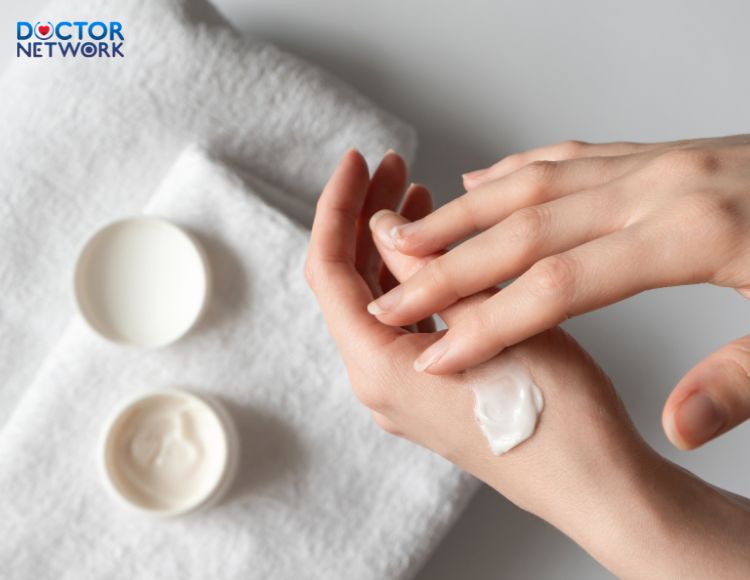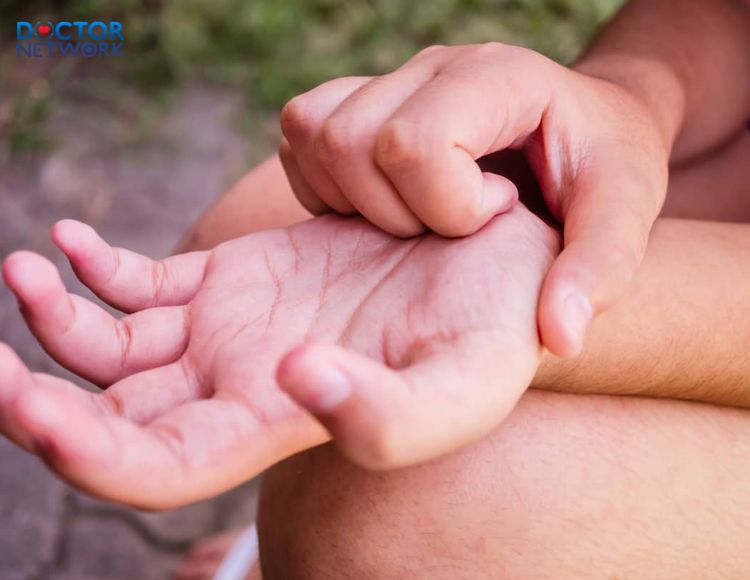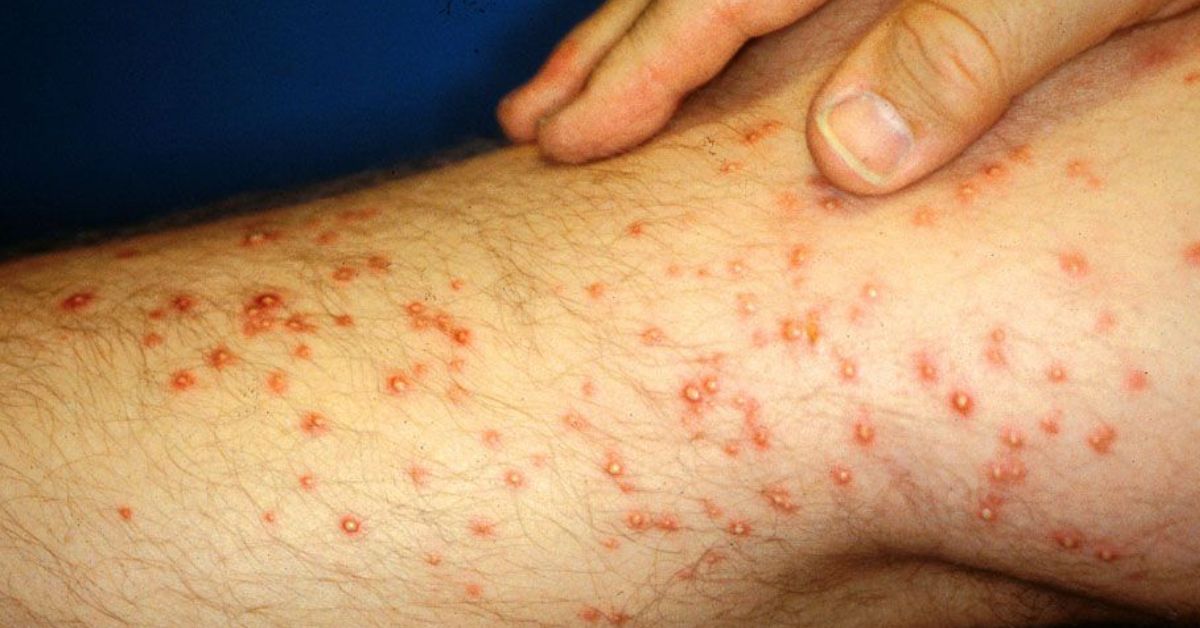Itchy palms and feet, medically known as palmoplantar pruritus, can be an irritating and sometimes debilitating condition affecting millions worldwide. This common dermatological issue can significantly impact quality of life, disrupting sleep and daily activities. In this comprehensive guide, we’ll explore the various causes of itchy palms and feet, from common skin conditions to underlying systemic diseases. We’ll delve into effective treatment options, prevention strategies, and crucial information on when to seek medical attention. Whether you’re dealing with occasional discomfort or chronic itching, this article aims to provide valuable insights to help you find relief and understand your symptoms better.
Understanding Itchy Palms and Feet
What Causes Itchy Palms and Feet?
The root causes of itchy palms and feet can be diverse, ranging from common skin conditions to more serious underlying health issues. Let’s examine these causes in detail:
Common Causes of itchy palms and feet
- Eczema (Atopic Dermatitis): This chronic skin condition is characterized by dry, itchy, and inflamed skin. It’s particularly common on the hands and feet, where the skin is thicker.

This condition can occur on one or both sides, and the itching can range from mild to severe
- Psoriasis: An autoimmune condition causing rapid skin cell turnover, leading to thick, scaly patches that can be intensely itchy.
- Contact Dermatitis: Resulting from direct contact with irritants or allergens, this condition can cause redness, itching, and sometimes blistering on the palms and soles.
- Allergies: Systemic allergic reactions can manifest as itching in various parts of the body, including the palms and feet.
- Dyshidrotic Eczema: A specific form of eczema that causes small, intensely itchy blisters on the palms and soles.
Less Common Causes
- Fungal Infections: Conditions like athlete’s foot can cause itching, especially between the toes and on the soles.
- Scabies: A parasitic infestation that can cause intense itching, particularly at night.
- Thyroid Issues: Both hyperthyroidism and hypothyroidism can lead to skin changes and itching.
- Diabetes: Uncontrolled blood sugar can lead to nerve damage (neuropathy) that may manifest as itching.
- Liver Disease: Certain liver conditions can cause itching all over the body, including the palms and soles.
Conditions that can Mimic Itch
- Anxiety and Stress: Psychological factors can heighten skin sensitivity and the perception of itch.
- Nerve Damage: Conditions affecting peripheral nerves can cause sensations that are perceived as itching.
Identifying Symptoms
Understanding the characteristics of your itch can provide valuable clues about its cause:
| Characteristic | Description | Potential Implications |
|---|---|---|
| Severity | Mild to intense | More severe itching may indicate a more serious condition |
| Timing | Constant, intermittent, or worse at night | Nighttime itching is common in conditions like scabies |
| Location | Specific areas or generalized | Localized itching may suggest contact dermatitis, while generalized itching could indicate systemic issues |
Skin Changes to Look For:
- Redness
- Dryness
- Bumps or blisters
- Cracks or fissures
- Scaling or flaking
Accompanying Symptoms:
- Burning sensation
- Tingling
- Pain or tenderness
When to Seek Medical Attention
Recognizing Serious Symptoms
While occasional itching is common, certain symptoms warrant prompt medical evaluation:
- Severe, persistent itch unresponsive to home remedies
- Skin changes such as blisters, open sores, oozing, or crusting
- Swelling, pain, or joint stiffness
- Fever, fatigue, or unexplained weight loss
Diagnosing the Underlying Cause
Healthcare professionals employ various diagnostic methods to determine the root cause of itchy palms and feet:
- Medical History and Physical Examination: A thorough review of your symptoms, medical history, and a detailed skin examination.
- Skin Biopsy: A small sample of skin is taken for microscopic examination.
- Blood Tests: To check for underlying conditions like thyroid disorders or diabetes.
- Allergy Testing: Patch tests or blood tests to identify potential allergens.
Treatment Options for Itchy Palms and Feet
Home Remedies
For mild cases, several home remedies can provide relief:
- Moisturizing Regularly: Use fragrance-free, hypoallergenic moisturizers to keep skin hydrated.

Use fragrance-free, hypoallergenic moisturizers to keep skin hydrated
- Cool Compresses or Baths: Soothe irritated skin and reduce inflammation.
- Oatmeal Baths: Colloidal oatmeal can help relieve itching and irritation.
- Avoid Scratching: Use soft gloves at night if necessary to prevent scratching during sleep.
- Over-the-counter Antihistamines: Can help reduce itching caused by allergic reactions.
Prescription Medications
For more severe or persistent cases, your healthcare provider may recommend:
- Topical Corticosteroids: Reduce inflammation and itching.
- Antibiotics: For bacterial skin infections.
- Antifungal Medications: To treat fungal infections like athlete’s foot.
- Immunosuppressants: For severe cases of eczema or psoriasis.
- Light Therapy: Controlled exposure to UV light can help in certain skin conditions.
Preventing Itchy Palms and Feet
Hygiene and Skincare
Maintaining good hygiene and proper skincare can help prevent many causes of itchy palms and feet:
- Regular handwashing with mild soap
- Using gentle, fragrance-free moisturizers
- Avoiding harsh chemicals and known irritants
- Wearing breathable, moisture-wicking fabrics
Lifestyle Factors
Several lifestyle changes can contribute to healthier skin and reduced itching:
- Managing stress through relaxation techniques or therapy
- Getting adequate sleep to support skin health
- Maintaining a balanced diet rich in vitamins and minerals
- Identifying and avoiding personal allergens
Itchy Palms and Feet in Specific Populations
Pregnancy
Hormonal changes during pregnancy can increase skin sensitivity and the likelihood of itching. Safe treatment options should be discussed with a healthcare provider.
Hormonal changes during pregnancy can increase skin sensitivity and the likelihood of itching
Children
Common causes of itchy palms and feet in children include:
- Eczema
- Contact dermatitis from new products or materials
- Fungal infections
Treatment approaches may need to be adjusted for pediatric patients.
Older Adults
Factors contributing to itch in older adults include:
- Decreased skin moisture and elasticity
- Cumulative sun damage
- Increased likelihood of systemic diseases affecting the skin
Managing itchy palms and feet in seniors often involves a multifaceted approach, addressing both dermatological and systemic factors.
Further Resources and Support
For additional information and support, consider consulting:
- Dermatologists and Allergists: Specialists who can provide expert diagnosis and treatment.
- Online Resources:
- National Eczema Association (www.nationaleczema.org)
- American Academy of Dermatology (www.aad.org)
- National Psoriasis Foundation (www.psoriasis.org)
Frequently Asked Questions about “itchy palms and feet”
- What is the most common cause of itchy palms and feet? Eczema and contact dermatitis are among the most common causes, affecting millions worldwide.
- How can I tell if my itchy palms and feet are caused by a fungal infection? Fungal infections often cause scaling, redness, and sometimes blistering, particularly between the toes or on the soles. A healthcare provider can confirm the diagnosis.
- Are there any home remedies that can help relieve the itch? Yes, moisturizing regularly, using cool compresses, and taking oatmeal baths can often provide relief for mild itching.
- When should I see a doctor for itchy palms and feet? Consult a healthcare provider if the itching is severe, persistent, or accompanied by other symptoms like pain, swelling, or skin changes.
- What are some tips to prevent itchy palms and feet? Regular moisturizing, avoiding known irritants, wearing breathable fabrics, and managing stress can help prevent itchy palms and feet.
Scientific researches on “itchy palms and feet”
- “Pruritus in the elderly: A guide for diagnosis and management” by Yosipovitch and Bernhard, published in Clinics in Dermatology (2013).
- “Chronic pruritus: a paraneoplastic sign” by Yosipovitch, published in Dermatologic Therapy (2010).
- “Itch: Mechanisms and Management of Pruritus” by Twycross et al., published in Clinical Medicine (2003).
- “Neuropathic itch” by Oaklander, published in Seminars in Cutaneous Medicine and Surgery (2011).
- “Chronic Pruritus: Etiology, Evaluation, and Therapy” by Weisshaar and Dalgard, published in American Journal of Clinical Dermatology (2009).
- “Palmoplantar Eczema: A Review of Clinical Features, Diagnosis, and Management” by Wollina, published in American Journal of Clinical Dermatology (2018).
- “Dyshidrotic Eczema: Epidemiology, Clinical Characteristics, and Therapy” by Wollina, published in American Journal of Clinical Dermatology (2010).
By understanding the causes, recognizing symptoms, and knowing when to seek help, you can effectively manage itchy palms and feet. Remember, persistent or severe symptoms warrant professional medical advice to ensure proper diagnosis and treatment.
References:
Itchy palms: 6 causes, treatment, and prevention – MedicalNewsTodaymedicalnewstoday·1
Kiểm Duyệt Nội Dung
More than 10 years of marketing communications experience in the medical and health field.
Successfully deployed marketing communication activities, content development and social networking channels for hospital partners, clinics, doctors and medical professionals across the country.
More than 6 years of experience in organizing and producing leading prestigious medical programs in Vietnam, in collaboration with Ho Chi Minh City Television (HTV). Typical programs include Nhật Ký Blouse Trắng, Bác Sĩ Nói Gì, Alo Bác Sĩ Nghe, Nhật Ký Hạnh Phúc, Vui Khỏe Cùng Con, Bác Sỹ Mẹ, v.v.
Comprehensive cooperation with hundreds of hospitals and clinics, thousands of doctors and medical experts to join hands in building a medical content and service platform on the Doctor Network application.



























